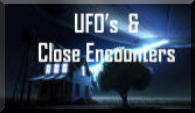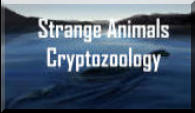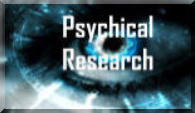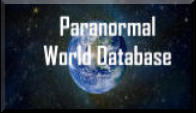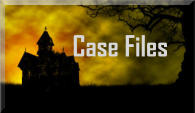
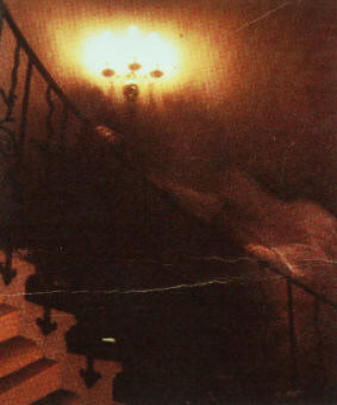









From the time man first carved drawings on cave walls to depict events of his life and the world
around him, capturing and recording images has been a favorite and necessary endeavor for the
ages. 'Spirit photography' had its roots in the early 1860s, when a man simply known as W. Campbell
photographed the image of a small boy seated in a chair. The unusual part of this otherwise ordinary
shoot was that it was intended to be a picture of the chair. The boy was not present at the time.
But perhaps the real pioneer of the field was William Mumler of Boston, Mass., who while taking a
self-portrait, discovered a woman in the picture he recognized as a cousin who had died 12 years
before the shot was taken!
Mumler began to produce more and more photographs of this nature and many people of means
(including former First Lady Mary Lincoln) paid what then were considered very handsome sums of
money to pose for him in the hopes of being joined in the picture by otherworldly acquaintences.
Mumler's work was intensely scrutinized and eventually exposed in court as fraud in 1872. Slow
shutter speeds and the need for subjects to remain still as long a minute or more to allow the print
to finish would allow an accomplice, undetected, to stroll through the photo at an opportune moment
producing a transparent image in the background. Mumler also became very proficient at what we
now refer to commonly as "double-exposures" by taking photos on plates which already contained
images on them. Strangely (or perhaps not) many people - despite growing evidence to the contrary
- claimed Mumler was the real deal.
Advances in photographic technology now allow for more genuine documentation of "ghostly"
photos, but those advances also allow for any middle school-aged student to Photoshop an image so
real it would take a photographic physicist to debunk it. Despite such progress (and deception) in the
field, there have been a number of photographs - some taken by simple chance by people who
happen to have been in the right place at the right time - that have been presented as the best
photographic evidence of ghosts ever caught on film.
The vast majority of such photographs have eventually been exposed as hoaxes and examples of
clever manipulation of the photographic process. We don’t present anything here as conclusive proof,
but as examples of photos that have made people at least sit up and take notice.
This photograph was taken in 1966 by Rev. Ralph Hardy, a retired clergyman from British Columbia,
Canada who was visiting the National Maritime Museum in Greenwich, England. Rev. Hardy had
merely intended to take a photograph of the famous Tulip Stairway in the Queen's House section of
the building. Upon development, this cloaked figure ascending the stairs appeared in the picture.
Experts from Kodak who examined the negative have ruled out forgery or double-exposure issues
with the film. Interestingly, there have been many other reports of paranormal activity within the
building with many centered around the staircase, including that of a woman who was thrown off the
top banister and fell to her death 50 feet below mopping up blood from the bottom of the staircase.
Our only quibble and perhaps a sign this is a doctored photo is that the top hand on the stairs seems
to be oddly formed in terms of the position of the thumb and fingers.
This photo was taken by the webmaster at Ghosts of Tombstone - Mr. Terry Clanton - a descendant of
the infamous Clanton Gang who shot it out at the OK Corral. He claims:
"I personally shot this photograph of my friend in Boothill Graveyard... We had it developed at
Thrifty Drug Store and I know no one tampered with it! The picture was shot in black & white,
because my friend wanted old west looking pictures of himself dressed up in my 1880 period clothes.
I know there was no other person in this photograph when I shot it, especially some guy holding a
knife! That's right folks, if you look carefully the person in the background appears to be holding a
knife! Look just to the right of my friend and you'll see a person which appears to have no legs or is
coming out of a grave!"
Please note that our own research of the photo yielded no hard photographic evidence to
dispute the author's statement. This excerpt is the same found in most accounts of the event. It is
generally accepted as genuine, but we have to acknowledge that yes, someone could have wandered
into the picture. A re-creation of the shot two weeks later revealed that a person's legs can indeed be
seen through the brush so we will take Mr. Clanton at his word.
This recent photo of a supposed ghost taken in May of 2008 at Tantallon Castle in Scotland
generated tremendous buzz when it surfaced in March of 2009. Showing what appears to be a
spectral figure in fifteenth century dress peering out of a barred window from the ruins of the castle,
it has been examined by a number of photographic experts, all of whom confirmed that there is no
evidence of digital trickery having been used. Even ghost sceptic Professor Richard Wiseman
admitted to being puzzled. Sent the photo as part of research project the man was conducting on
ghosts at the time, he was quoted as saying that “the figure appears to be in period costume, but we
know 100 percent that Tantallon Castle is not the sort of place that has dummies or costumed
guides; they just don’t go in for that “I suppose it could be a visitor looking a little bit strange.
Perhaps someone will come forward. Another possibility is an odd reflection of sunlight, but it does
look very like a person. The explanationis not obvious,” the Professor added. Tantallon Castle, a
ruined fortress dating back to the 14th century, was badly damaged in an attack by Oliver Cromwell’s
forces in 1651 and has stood largely unoccupied ever since
A ghostly image, nicknamed Skeletor, was captured on film by the Hampton Palace closed-circuit
security cameras in 2003. Many believe that this image proves the existence of one of the ghosts
that have long been rumored to be in residence at the palace. According to the palace security
guards, the figure was caught on film after a fire alarm sounded in the palace near an exhibition hall,
alerting them that the doors had been opened. The camera shows the fire doors opening, and then a
figure appears at the door, reaching out as if to close the doors. When the guards arrived, the doors
were closed and no one was there. The doors had opened at the same time, in a similar manner, the
day before the figure was photographed, as well as the day after. Some experts claim that the
Hampton Court Palace photograph is proof of the existence of a ghost, while some claim that it is a
hoax. The palace guards are believed to be innocent of any deception and do not enter the area of
the palace where the figure was photographed.
The old woman in the photo was in her 90s when her daughter took this picture. Her father, the
woman's husband had already been dead for many years. The daughter reported that her mother
was in the early stages of dementia (or Alzheimer's) and had been heard talking at times to her dead
husband. When the film was developed, their daughter was astonished to find a man who clearly was
her deceased father standing behind his wife. Some pictures of her father are seen above for
comparison.
A daytime investigation conducted on August 10, 1991 at Bachelor's Grove Cemetery in Chicago
yielded this startling photograph by Judith Felz . The picture was snapped using infra-red film and
clearly shows what appears to be a young woman, semi-transparent and wearing period clothing
sitting atop a bench in the cemetery. The number of hauntings reported at Bachelor's Grove number
literally in the hundreds and run the gamut of paranormal variety. It is thought the woman in the
photo may be buried next to her infant son and is also said to wander the grounds with the baby in
her arms. Skeptics have steadfastly refuted the authenticity of the photo, but their explanations have
fallen short in light of professional photographic analysis.
This photo of Sir Victor Goddard's World War I squadron who served on the HMS Daedalus was taken
in 1919. In the back row, fourth from the left stands an airman posing for the picture like the others,
but with a very distinct difference - there appears to be a man standing over his left shoulder also
looking toward the camera. It is said to be an aircraft mechanic named Freddy Jackson, who had died
two days earlier when he was killed by an airplane propeller. His funeral took place on the same day
this picture was taken. All squadron members instantly and definitively identified him. Apparently he
wanted to be included in the group shot with the others.
This is one of the more famous ghost photos taken over the years and one that is considered by
many to be authentic purely because of the character of the man who shot the photo. Taken in the
Australian outback by a Reverend R.S. Blance at Corroboree Rock near Alice Springs, Australia in
1959, the photo has been frequently examined but never explained to this day. The Reverend was
alone when he took the photo and didn’t see the translucent figure until he had the film developed.
Who or what the figure is is unknown, of course, but he appears to be wearing some sort of flowing
robe and is holding his hands in such a way that he is either looking through some thing or is
performing some sort of ritual. According to local legend, the site was known for being a spot where
the Aborigine tribesmen carried out terrible ceremonies in the past. Could it be the spirit of one of
the Aborigine’s white victims? No way to know. One could almost imagine this being a double
exposure if it were not for the inconsistency of the figure’s transparency, which varies greatly from
opaque to transparent. Certainly one of the more curious spirit photos out there, and still considered
by many to be among the best.
(ourcuriousworld.com)
Lord Combermere, a descendant of Sir George Cotten, became the Governor of Barbados in
1817. Ironically, he was involved in an infamous paranormal event during his occupancy of that
position, the "Moving Coffins of Barbados". Caskets inside the sealed burial vault of a family named
Chase were said to have shifted their positions without any apparent human intrusion. The caskets
would be set back to their original positions and each time a new member of the Chase family was
introduced to the crypt, the caskets once again would be found in disarray. As Governor, Lord
Combermere ordered an investigation into this phenomena.
The photograph above was taken in 1891 in the Combermere Abbey Library in Cheshire, U.K. by
Sybell Corbett while in the company of her sister. In the chair on the left, a faint, semi-transparent
figure of a man can be seen.
In and of itself, a characteristically compelling spirit photo. However, at the exact time this
photo was being taken, Lord Combermere, along with family and staff were attending a funeral 4
miles away - his own. Upon scrutiny by family members, it was revealed that this is the ghostly
image of Lord Combermere himself, killed days before in an auto accident.
Miss Corbett's photographic journal revealed the photograph's exposure time took about an
hour and it was reasoned that some member of the staff may have wandered through the room and
sat in the chair, but given the testimony of the household maintaining that all servants and family
members were attending the funeral, Mrs. Corbett and her sister were very much alone.
Perhaps the most famous “ghost photo” ever taken, this highly controversial shot, taken at an
English manor in 1936 and allegedly showing the Brown Lady of Raynham Hall descending a
staircase, remains among the most thoroughly examined and investigated of them all, giving it a
significant pedigree.
What makes it so compelling is that the photo was taken not by a ghosthunter looking to make a
name for himself,but by two men sent by a London magazine to take some rather pedestrian shots of
the architecture of the building. What’s also interesting about this photograph is that in contrast to
most photos in which the figure is not seen until after the film is developed, the spectral figure of a
woman descending the stairway was seen seconds before the shutter was snapped by Mister Shira.
(Apparently Colonel Provand never saw the figure at the time because he was preoccupied with
setting up for the next shot beneath the camera’s hood and only snapped the shutter upon Mister
Shira’s command.) The negatives for this photo have been scrutinized by literally hundreds of experts
(and no small number of skeptics) over the years, and none have been able to find evidence of it
being either a hoax or a double exposure. It has been, however, suggested the figure could be the
result of a smudged fingerprint or grease of some kind smeared on the lens, though this seems like a
stretch.
(ourcuriousworld.com)
RISEUP’S TOP TEN GHOST PHOTOS
10. THE TULIP STAIRCASE GHOST
9. THE BOOTHILL CEMETERY GHOST
8. THE GHOST OF TANALLON CASTLE
7. THE HAMPTON COURT GHOST
6. VISIT FROM GRANDPA
5. THE MADONNA OF BACHELOR’S GROVE
4. THE GHOST OF FREDDIE JACKSON
3. CORROBOREE ROCK GHOST
2. LORD COMBERMERE’S GHOST
1. THE BROWN LADY OF RAYNHAM





















